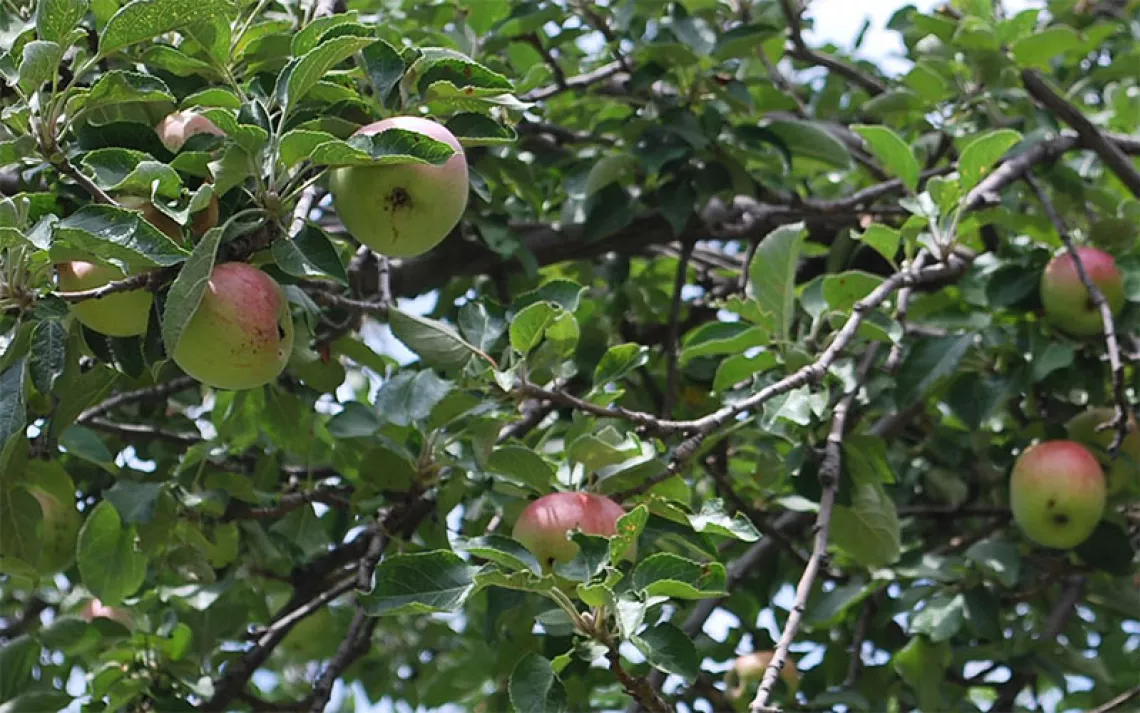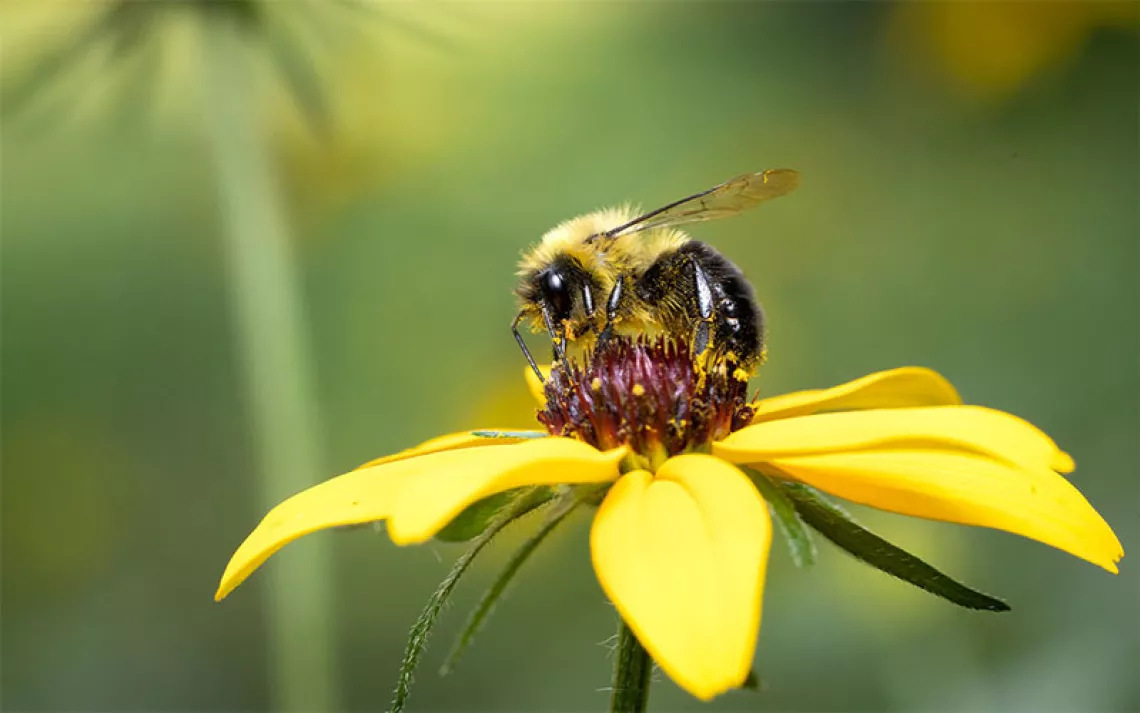Is Sterilization the Answer to Too Many Urban Deer?
Many are dubious, but the numbers add up
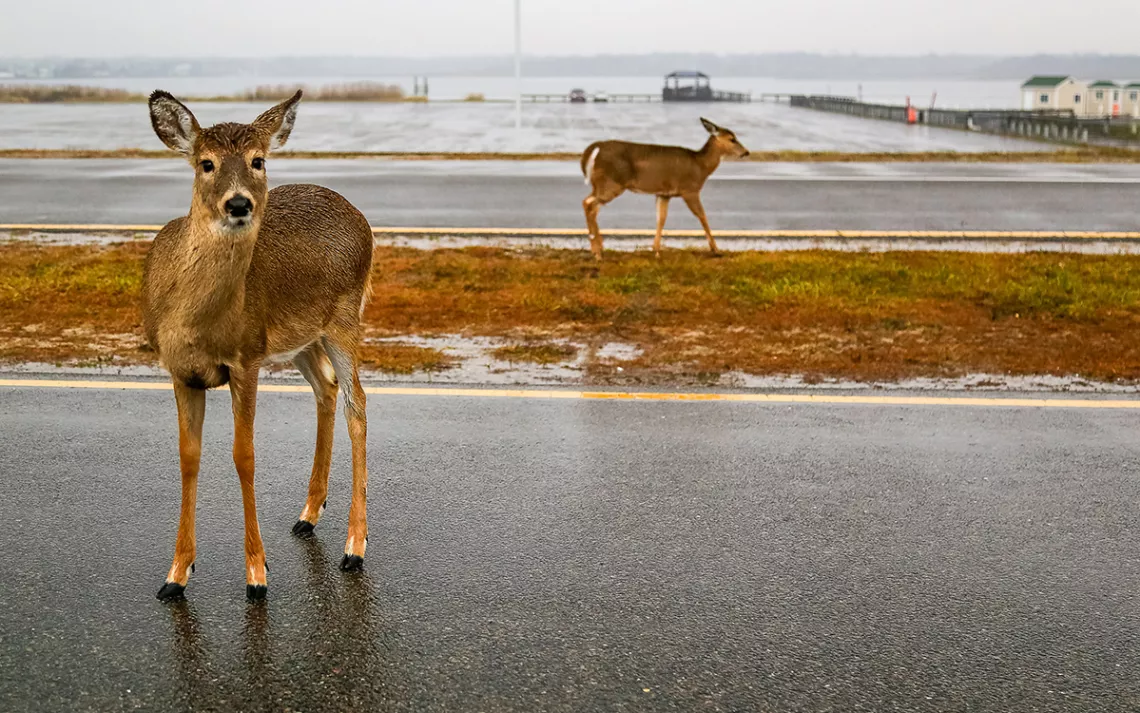
Photo by AlisonPerryPhotography/iStock
It’s a few hours before dawn in early January 2018. A black pickup races through the darkness of an upscale neighborhood in Cincinnati and pulls up next to a Queen Anne–style home. Four guys leap out, toting a portable stretcher. They jog silently past the darkened windows to the backyard, where Tony DeNicola waits, mud-encrusted boots planted in the manicured grass, a dart gun slung across one shoulder. At his feet lies a female white-tailed deer, legs splayed, eyes shut, tongue lolling to one side. The faint buzz of a snore escapes from her lips.
Soon, a team of veterinarians will slice open her belly, remove her ovaries, staple her up, tag her ear, and then call for the transport team to take her back to the neighborhood.
Sterilization sounds like a crazy way to address the problem of deer overpopulation, which many US cities and suburbs are struggling with. (Some areas of Cincinnati, for example, have 150 deer per square mile, compared with 20 per square mile for a healthy natural ecosystem.) But DeNicola’s efforts seem to be working. His doe sterilization program has been going on in a corner of the city since 2015, and so far the numbers look good. Based on records from the first three years of operation, DeNicola has documented a 19 percent decline in the deer population. That’s in keeping with data he has gathered from four other sites around the country that saw major drops after three years of doe sterilization: 34 percent in Cayuga, New York, 20 percent in Fairfax, Virginia, 47 percent on the National Institute of Health campus in Bethesda, Maryland, and 37 percent in a gated community in San Jose, California.
DeNicola may be the only person in the country studying whether sterilization is an effective way to reduce urban deer populations. The Connecticut resident has a doctorate in wildlife biology from Purdue, but with his square jaw, close-cropped hair, and broad chest, he seems more Navy Seal than elbow-patched professor. And while his numbers look good, that doesn’t necessarily mean that his methods will soon become widespread. Because sterilization, like all forms of deer control, is controversial.
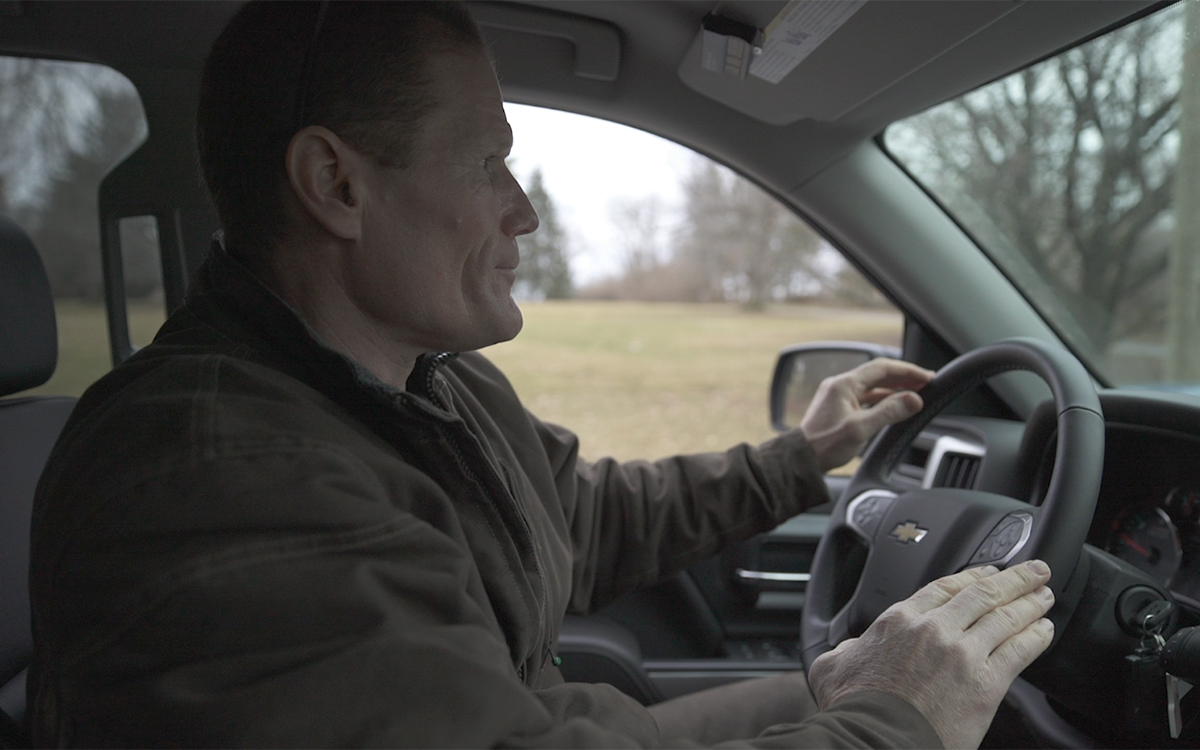
Tony DeNicola
Hunters are opposed, because wildlife agencies have long employed them to try to control urban deer populations—though at least one study has shown that this doesn’t work because it doesn’t reduce deer numbers enough to have an ecological impact.
Sterilization was controversial in San Jose because it worked. A gated community hired DeNicola after they calculated losses of $300,000 a year in landscaping from deer. DeNicola brought the herd down from 153 to 60. Some residents freaked out, worrying they’d lost too many deer, and set out corn for those that remained. “Every year, there’s a new absurdity in the realm of deer management,” DeNicola says.
That pales in comparison to what DeNicola faced since he took on a $3-million-plus project to sterilize deer on Staten Island in 2016. Hunting is not allowed in any of New York’s boroughs, so Mayor Bill de Blasio chose sterilization over sharpshooting, thinking it would be less controversial. But when the city’s contract with DeNicola was announced in 2016, a number of prominent wildlife experts scoffed at the idea, especially because DeNicola had decided to sterilize bucks over does, vasectomies being easier to do than oophorectomies. However, every last buck must be sterilized for such a program to work; DeNicola thought it was possible given that Staten Island was an island. Bernd Blossey, an ecologist at Cornell University, told a Staten Island reporter, “It's difficult for me to come up with all the reasons why this is a really stupid plan.” John Rasweiler, a reproductive zoologist who has served on deer management groups on Long Island, called the idea “absolute lunacy.”
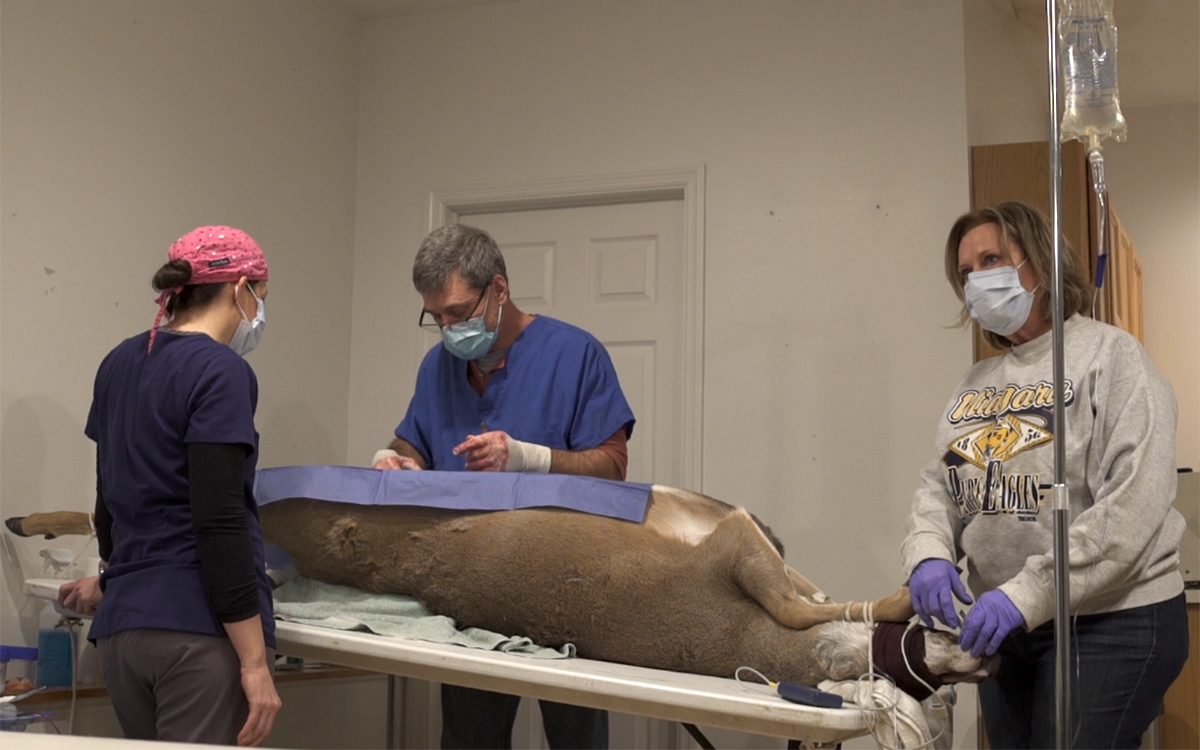
Deer sterilization operation
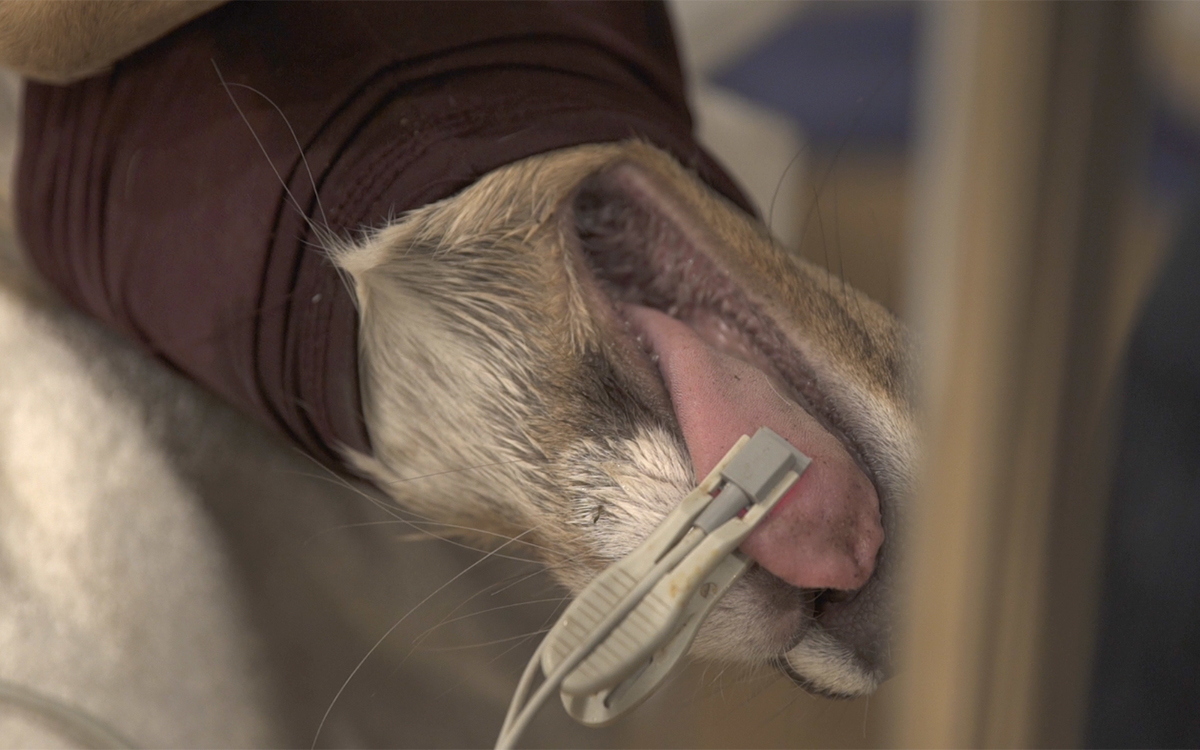
Deer operation
And yet population estimates show that the Staten Island herd dropped by 8 percent since the project began, from 2,053 in 2017 to 1,884 in 2018. “I think we’re going to be successful,” DeNicola says.
In contrast to New York’s multimillion-dollar, government-funded project, the Cincinnati undertaking is small and grassroots. It was started by a group of residents who live in a neighborhood called Clifton, near the University of Cincinnati. Bob Rack, his wife, Christine Lottman, and their neighbor, Laurie Briggs, all live in a condominium there across from 75-acre Mt. Storm Park. They appreciated watching the wildlife that wandered through the park and weren’t happy when they heard in 2014 that the local park board was going to start a bow-hunting program in the park to reduce the deer numbers.
“That’s Mt. Storm Park on the other side of this driveway,” Rack says, gesturing toward several large windows in his condo with a picture-perfect view of the park. “We think of this as a nature preserve, and we think of [the deer] as neighbors. Yes, it’s a pain in the butt to have to go out and fence off all our trees and bushes each winter, but we do. Our value is to treat them like they’re part of an ecosystem instead of as a pest.”
Rack, Lottman, and Briggs successfully lobbied the board to allow them to try a deer sterilization experiment that they named the Clifton Deer Program.
In the first three years, the group spent $95,000 on the project, raised through local donations and grants. In addition to DeNicola’s costs, that amount includes equipment, population surveys (done with remote sensor camera traps), and community education. The funds also paid to train a local man in deer darting techniques and a local veterinarian in how to perform deer oophorectomies. Rack, Lottman, and Briggs hope that once the initial five-year contract ends and 95 percent of the does are sterilized, they can transition to these local people and keep future costs at a minimum. “We want this to be more than just an interesting research problem,” Rack says. “We want it to be an ongoing sustainable approach to managing wildlife.”
For now, though, the professionals are still in charge. When the door to the makeshift operating room (a neighbor’s backyard outbuilding) swings opens and the transport crew shuffles in with the darted deer, veterinarian Randy Junge and his crew swing into action. They hoist the deer onto a table, tie her legs down (so no one gets hurt should she wake), and clip a blood-oxygen rate monitor onto her outstretched tongue. A few moments later, Junge digs gloved fingers into the incision he has made, pulling out a small, slick bulb of pink tissue with specks of black peeking through. “This is the ovary,” he says. “Those dark spots are fawn embryos.”
When DeNicola first approached Junge about a decade ago with the idea of performing doe oophorectomies, the veterinarian says, his first thought was, “There’s no way in the world this is going to work.” But he agreed to give it a try. Now, he says, “It’s really a very simple procedure, like spaying a cat or a dog, only the animals are bigger and wilder. But once you get inside, it all looks the same.”
Junge snips off the ovaries, stitches closed the ligaments that the organs were attached to, then staples the incision shut. The entire procedure takes 15 minutes. As soon as it’s over, a volunteer puts tags—No. 57— in the doe’s ears, and the transport team is called back. They take the doe to the property of the Cincinnati Women’s Club, across the street from where she was captured. A volunteer has already spread out a quilt on the wide-sloping lawn and the team gently lays the deer down on it. Junge kneels and delivers the reversal drug that will bring the doe back to consciousness.
Junge and the volunteers all step back and wait. In the distance, a dark shape paces near a grove of pine trees—the doe’s fawn from the previous spring. After 20 minutes, No. 57 begins to stir, and, after a few false starts, she gets to her feet and moves tentatively away from her human observers. Finally she turns and heads toward her yearling—the last she’ll ever produce.
 The Magazine of The Sierra Club
The Magazine of The Sierra Club

